Learn this song by Friday!
Games Cladograms
How would you find your favorite fresh fruit or vegetable in the grocery store?
You might look in the produce section, such as the one shown in Figure 1. Different kinds of peppers are displayed in one area. Citrus fruits such as oranges, lemons, and grapefruits are stocked in another area. There are many different ways to organize produce in a grocery store. In a similar way, there have been many different ideas about how to organize, or classify, living things.
A Greek philosopher named Aristotle (384 B.C.−322 B.C.) was one of the first people to classify organisms. Aristotle placed all organisms into two large groups, plants and animals. He classified animals based on the presence of “red blood,” the animal’s environment, and the shape and size of the animal. He classified plants according to the structure and size of the plant and whether the plant was a tree, a shrub, or an herb.

PhotoLink/Getty Images
Figure 1 The produce in this store is classified into groups.
 Visual Check What other ways can you think of to classify and organize produce?
Visual Check What other ways can you think of to classify and organize produce?
In the 1700s, Carolus Linnaeus, a Swedish physician and botanist, classified organisms based on similar structures. Linnaeus placed all organisms into two main groups, called kingdoms. Over the next 200 years, people learned more about organisms and discovered new organisms. In 1969 American biologist Robert H. Whittaker proposed a five-kingdom system for classifying organisms. His system included kingdoms Monera, Protista, Plantae, Fungi, and Animalia.
SCIENCE USE V. COMMON USE
kingdom
Science Use a classification category that ranks above phylum and below domain
Science Use a classification category that ranks above phylum and below domain
Common Use a territory ruled by a king or a queen
Determining Domains
The classification system of living things is still changing. The current classification method is called systematics. Systematics uses all the evidence that is known about organisms to classify them. This evidence includes an organism’s cell type, its habitat, the way an organism obtains food and energy, structure and function of its features, and the common ancestry of organisms. Systematics also includes molecular analysis—the study of molecules such as DNA within organisms.
Using systematics, scientists identified two distinct groups in Kingdom Monera—Bacteria and Archaea (ar KEE uh). This led to the development of another level of classification called domains. All organisms are now classified into one of three domains—Bacteria, Archaea, or Eukarya (yew KER ee uh) —and then into one of six kingdoms, as shown in Table 1.
1. Key Concept Check What evidence is used to classify living things into groups?
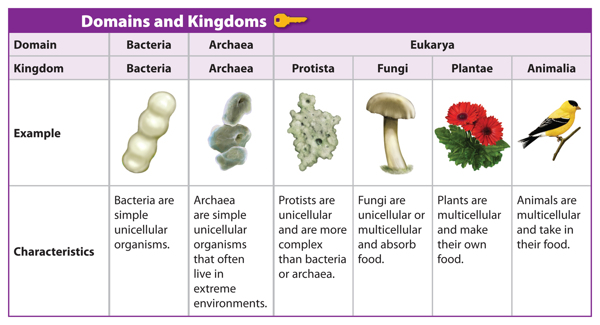
Table 1 Domains and Kingdoms
Scientific Names
Suppose you did not have a name. What would people call you? All organisms, just like people, have names. When Linnaeus grouped organisms into kingdoms, he also developed a system for naming organisms. This naming system, called binomial nomenclature (bi NOH mee ul · NOH mun klay chur), is the system we still use today.
Binomial Nomenclature
Linneaus’s naming system, binomial nomenclature, gives each organism a two-word scientific name, such as Ursus arctos for a brown bear. This two-word scientific name is the name of an organism’s species (SPEE sheez). A species is a group of organisms that have similar traits and are able to produce fertile offspring. In binomial nomenclature, the first word is the organism’s genus (JEE nus) name, such as Ursus. A genus is a group of similar species. The second word might describe the organism’s appearance or its behavior.
How do species and genus relate to kingdoms and domains? Similar species are grouped into one genus (plural, genera). Similar genera are grouped into families, then orders, classes, phyla, kingdoms, and finally domains, as shown for the grizzly bear in Table 2.

Table 2 The classification of the brown bear or grizzly bear shows that it belongs to the order Carnivora.
 Visual Check What domain does the brown bear belong to?
Visual Check What domain does the brown bear belong to?
Uses of Scientific Names
When you talk about organisms, you might use names such as bird, tree, or mushroom. However, these are common names for a number of different species. Sometimes there are several common names for one organism. The animal in Table 2 might be called a brown bear or a grizzly bear, but it has only one scientific name, Ursus arctos.
Other times, a common name might refer to several different types of organisms. For example, you might call both of the trees in Figure 2 pine trees. But these trees are two different species. How can you tell? Scientific names are important for many reasons. Each species has its own scientific name.
Scientific names are the same worldwide. This makes communication about organisms more effective because everyone uses the same name for the same species.
1. Key Concept Check Why does every species have a scientific name?
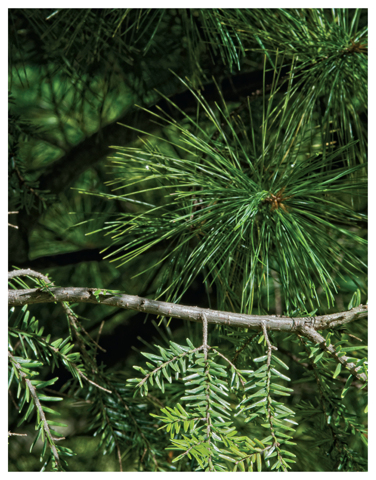
Mark Steinmetz
Figure 2 These trees are two different species. Pinus alba has long needles, and Tsuga canadensis has short needles.
WORD ORIGIN
genus
from Greek genos, means “race, kind”
from Greek genos, means “race, kind”
Suppose you go fishing and catch a fish you don’t recognize. How could you figure out what type of fish you have caught? There are several tools you can use to identify organisms.
Dichotomous Keys
A dichotomous key is a series of descriptions arranged in pairs that leads the user to the identification of an unknown organism. The chosen description leads to either another pair of statements or the identification of the organism. Choices continue until the organism is identified.
The dichotomous key shown in Figure 3 identifies several species of fish.
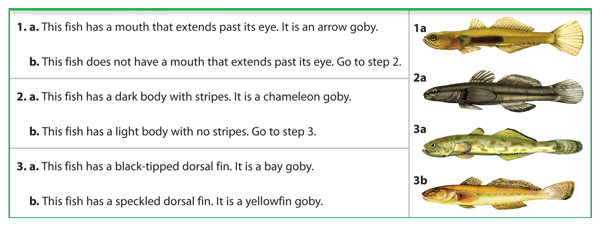
Figure 3 Dichotomous keys include a series of questions to identify organisms.
Cladograms
A family tree shows the relationships among family members, including common ancestors. Biologists use a similar diagram, called a cladogram. A cladogram is a branched diagram that shows the relationships among organisms, including common ancestors. A cladogram, as shown in Figure 4, has a series of branches. Notice that each branch follows a new characteristic.
Each characteristic is observed in all the species to its right. For example, the salamander, lizard, hamster, and chimpanzee have lungs, but the salmon does not. Therefore, they are more closely related to each other than they are to the salmon.

Figure 4 A cladogram shows relationships among species. In this cladogram, salamanders are more closely related to lizards than they are to hamsters.
Assign scientific names to four unknown alien organisms from a newly discovered planet.

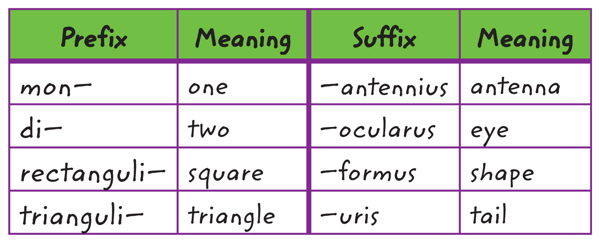
1. Use the table to assign scientific names to identify each alien.
Analyze and Conclude
1. Explain why you chose the two-word names for each organism.
2. Compare your names to those of a classmate. Explain any differences.
3. Key Concept Discuss how two-word scientific names help scientists identify and organize living
things.
things.
Lesson Review
Visual Summary
All organisms are classified into one of three domains: Bacteria, Archaea, or Eukarya.
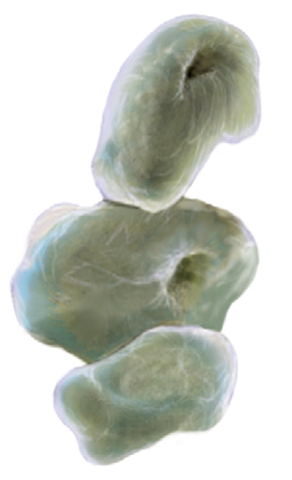
Every organism has a unique species name.
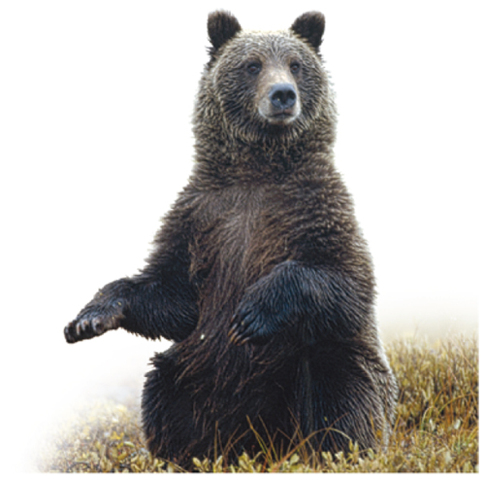
Shin Yoshino/Minden Pictures/Getty Images
A dichotomous key helps to identify an unknown organism through a series of paired descriptions.
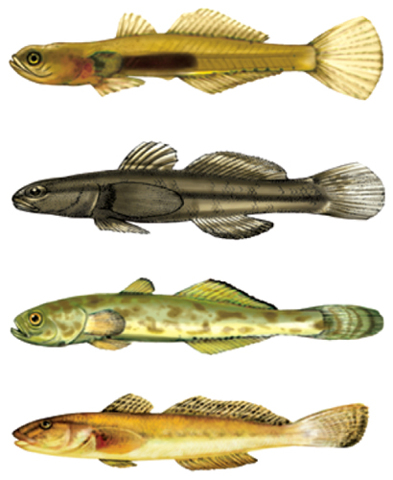
What do you think NOW?
You first read the statements below at the beginning of the lesson.
1. A dichotomous key can be used to identify an unknown organism.
2. Physical similarities are the only traits used to classify organisms.
Did you change your mind about whether you agree or disagree with the statements?
Rewrite any false statements to make them true.
Did you change your mind about whether you agree or disagree with the statements?
Rewrite any false statements to make them true.
Lesson Assessment
Use Vocabulary
1. A naming system that gives every organism a two-word name is __________.
2. Use the term dichotomous key in a sentence.
3. Organisms of the same __________ are able to produce fertile offspring.
Understand Key Concepts
4. Describe how you write a scientific name.
5. Compare the data available today on how to classify things with the data available during
Aristotle’s time.
Aristotle’s time.
6. Which is NOT used to classify organisms?
A.ancestry
B.habitat
C.age of the organism
D.molecular evidence
7. Which shows the correct order for the classification of species?
A.domain, kingdom, class, order, phylum, family, genus, species
B.domain, kingdom, phylum, class, order, family, genus, species
C.domain, kingdom, phylum, class, order, family, species, genus
D.domain, kingdom, phylum, order, class, family, genus, species
8. The organism shown below belongs in which kingdom?
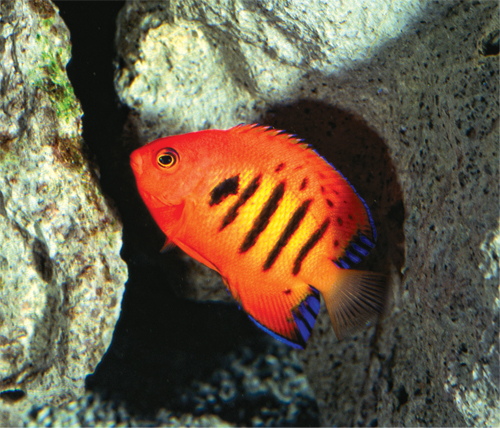

Creatas/PunchStock
A.Animalia
B.Archaea
C.Bacteria
D.Plantae
Interpret Graphics
9. Organize Information Copy and fill in the graphic organizer below to show how organisms are classified.
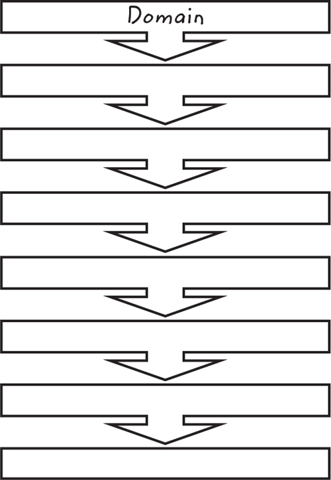
Critical Thinking
10. Suggest a reason scientists might consider changing the current classification system.
11. Evaluate the importance of scientific names.
12. Explain how using a dichotomous key can help you identify an organism.
13. Describe how the branches on a cladogram show the relationships among organisms.
14. Assess the effect of molecular evidence on the classification of organisms.
15. The photo below shows living and nonliving things. How would you classify the living things
by domain and kingdom?
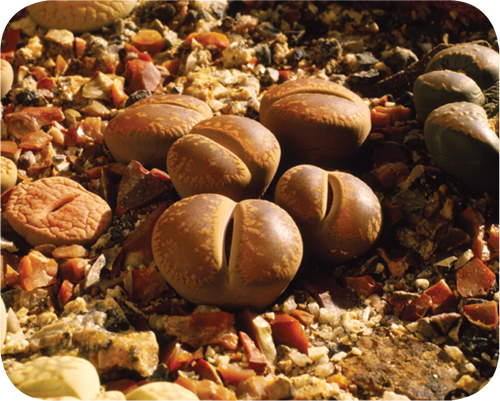
Vaughn Fleming/Garden Picture Library/Photolibrary
Writing in Science
16. Write a five-sentence paragraph explaining the importance of scientific names. Be sure to include
a topic sentence and a concluding sentence in your paragraph.
a topic sentence and a concluding sentence in your paragraph.



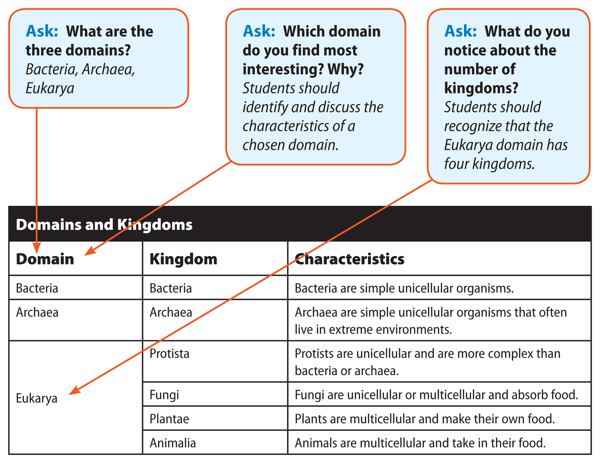

0 comments:
Post a Comment